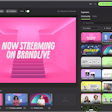
It's time to add “phygital” to the event industry’s lexicon. The contraction of physical and digital is technically not a new term. (Retail marketers coined it a couple of years back to bridge the gap between brick-and-mortar stores and online shopping.) But, in the era of COVID-19, phygital sums up where the event industry is, says Valerie Bihet, founder of the Miami-based Vibe Agency. “It’s a great word today because we need to be here in person but we can’t,” she says. “We need the help of digital to regroup.”
Bihet, a veteran corporate planner who has created events for some of the world’s most luxurious brands, knows how to make a splash. Her clients are not going to settle for a Zoom call, regardless if it’s for a training session or a product launch. “People are tired of virtual meetings, but not for virtual event experiences,” she says. “No one has really done that yet.”
The connection of virtual event experiences morphed into Bihet’s eureka moment. Now, she's pushing corporations—including one of the world’s most luxurious car companies—to get phygital.
Somewhat surprisingly, Bihet says it’s a mistake to get caught up too much on the technology aspect of virtual events. Many platforms can fit a planner’s needs, she says. The trick is changing your mindset so that a digital meeting feels like an experience instead of a webinar. Her prescription for the Zoom burnout blues is to turn on the television—really. Just consider it research to fulfill the vision of your next event.
Static images went out of vogue well before Charlie Chaplin’s time, so why would we expect attendees to sit and look at the same background for hours? “You need to move the camera shots every four to six seconds,” says Bihet, taking a page from the Michael Bay playbook. “You need to make sure the broadcast is a visual experience.”
That takes talent—namely a digital event producer who can bring life to your ideas. Simple suggestions are renting a TV studio and having panelists chat in different positions. For instance, have one group talk while standing up. Then have the next group be seated.
More elaborate is the concept of flipping the speaker’s image so that the virtual audience sees what he or she sees, rather than just watching one person talk in a vacuum. Just imagine that car company Bihet was pitching her services to using a driving simulation as part of the virtual presentation. The audience would see the driving and swerving and checkered flag just as the person racing does. “You create much more engagement,” notes Bihet.
Now, we’re back to terms planners were using before the pandemic—which gets at Bihet’s whole vision. “Eighty percent of virtual events are the same” as in-person events, she says. “The other 20% is technology.”
Bihet says that a 4:1 ratio is what we can expect for virtual versus live events going forward into 2021. So, the sooner planners start thinking phygitally, the sooner they will be able to maintain their client’s trust. “This is not a trend,” Bihet says. “This is reality.”
This story first appeared on Connect (BizBash's parent company) here.



















